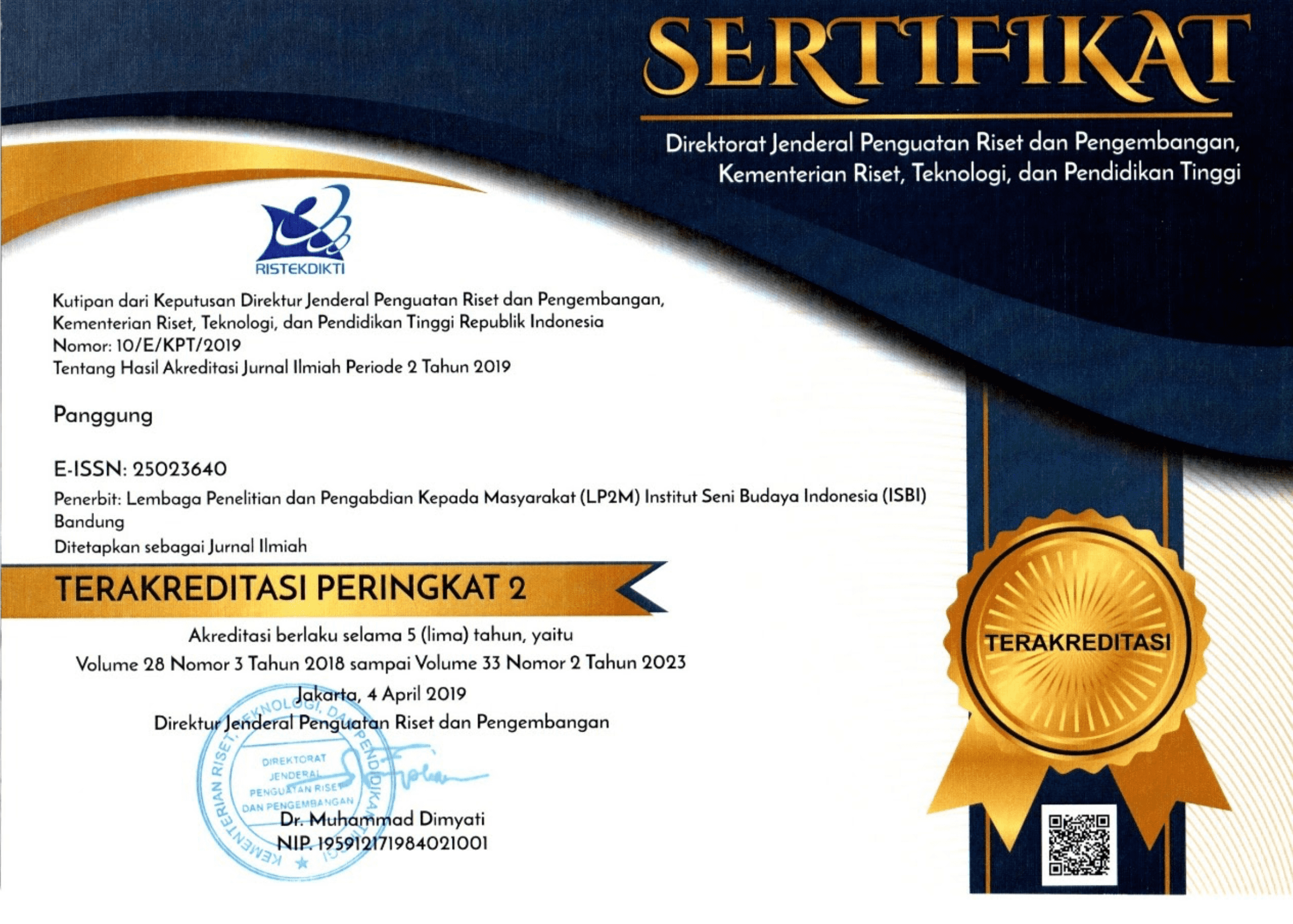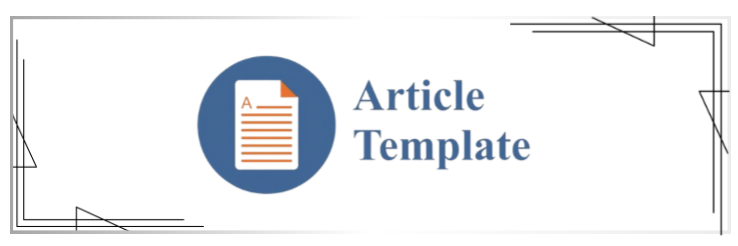The Comparison of the Baroque and Renaissance Aesthetics Paintings of “The Last Supper†by Caravaggio and Leonardo da Vinci
DOI:
https://doi.org/10.26742/panggung.v27i4.292Abstract
Abstract
The paintings of Caravaggio’s and Leonardo da Vinci’s “The Last Supper” are two iconic art works from two maestros in different era. Caravaggio is one of the fame Baroque’s artists and da Vinci is the most famous Renaissance man, who created the same theme of painting: The Last Supper. The theme represents the story of Christ’s supper. Through an inductive view, this comparative study analyzes the aesthetic structures of both paintings, by using Feldman’s perspective (Art as Image and Idea (1967). The analysis includes visual structures: line, form, darkness-lightness; elements of organization: unity, balance, rhythm, and proportion; and elements of perception and aesthetic: empathy and a psychic distance. The result of this research discovers two different perspectives of aesthetic characteristics of Baroque and Renaissance pantings.
Key words: Baroque, Caravaggio, Leonardo da Vinci, Renaissance, The Last Supper.
References
Buchholz, Elka Linda.
Art in Focus-Leonardo da Vinci, Cambridge: Konemann.
Feldman, Edmund Burke.
Art as Image and Idea , Englewood Cliffs, New Jersey: Prentice-Hall Inc.
Gelb, Michael J.
Menjadi Jenius Seperti Leonardo Da Vinci (Penerj. T. Hermaya), Jakarta, Gramedia
Pustaka Utama.
Gowing, Sir Lawrence.
A History of Art, Oxfordshire, England: Oxford Limited.
Read, Herbert.
Seni: Arti dan Problematikanya (Penerj. Soedarso SP.), Yogyakarta: Duta Wacana
University Press.
Supardi, A Hadiatmodjo.
Sejarah Seni Rupa Eropa, Semarang: IKIP Semarang Press.
Sullivan, Edward J.
‘’Caravaggio’’ dalam Encarta ® Reference Library.
Downloads
Published
How to Cite
Issue
Section
Citation Check
License
Penulis yang menerbitkan jurnal ini menyetujui persyaratan berikut:
Penulis memiliki hak cipta dan memberikan jurnal hak publikasi pertama dengan karya yang secara simultan dilisensikan di bawah Creative Commons Attribution License yang memungkinkan orang lain untuk berbagi karya dengan pengakuan kepengarangan karya dan publikasi awal dalam jurnal ini.
Penulis dapat mengadakan perjanjian kontrak tambahan yang terpisah untuk distribusi non-eksklusif versi jurnal yang diterbitkan dari karya tersebut (misalnya, mempostingnya ke repositori institusional atau menerbitkannya dalam sebuah buku), dengan pengakuan atas publikasi awalnya dalam jurnal ini.
Penulis diizinkan dan didorong untuk memposting pekerjaan mereka secara online (mis., Dalam repositori institusional atau di situs web mereka) sebelum dan selama proses pengiriman, karena dapat menyebabkan pertukaran yang produktif, serta kutipan yang lebih awal dan lebih besar dari karya yang diterbitkan.
Authors who publish with this journal agree to the following terms:
Authors retain copyright and grant the journal right of first publication with the work simultaneously licensed under a Creative Commons Attribution License that allows others to share the work with an acknowledgement of the work's authorship and initial publication in this journal.
Authors are able to enter into separate, additional contractual arrangements for the non-exclusive distribution of the journal's published version of the work (e.g., post it to an institutional repository or publish it in a book), with an acknowledgement of its initial publication in this journal.
Authors are permitted and encouraged to post their work online (e.g., in institutional repositories or on their website) prior to and during the submission process, as it can lead to productive exchanges, as well as earlier and greater citation of published work.





